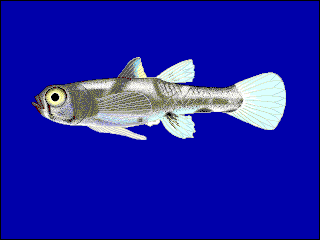Related Research Articles

The Callitrichidae are a family of New World monkeys, including marmosets, tamarins and lion tamarins. At times, this group of animals has been regarded as a subfamily, called Callitrichinae, of the family Cebidae.

The pygmy marmoset is a small species of New World monkey native to rainforests of the western Amazon Basin in South America. The species is notable for being the smallest monkey and one of the smallest primates in the world, at just over 100 grams (3.5 oz). It is generally found in evergreen and river-edge forests and is a gum-feeding specialist, or a gummivore.

Cupressus goveniana, now reclassified as Hesperocyparis goveniana, with the common names Californian cypress and Gowen cypress, is a species of cypress, that is endemic to California.

The whiskered auklet is a small seabird of the auk family. It has a more restricted range than other members of its genus, Aethia, living only around the Aleutian Islands and on some islands off Siberia, and breeding on these islands. It is one of the smallest alcids, only the closely related least auklet being smaller. Its name is derived from the long white feathers on its face that are part of its breeding plumage.
The Chinese Elm cultivar Ulmus parvifolia 'Hokkaido' is an older cultivar of Japanese origin.

The Ballantine scale is a biologically defined scale for measuring the degree of exposure level of wave action on a rocky shore. Devised in 1961 by W. J. Ballantine, then at the zoology department of Queen Mary College, London, the scale is based on the observation that where shoreline species are concerned "Different species growing on rocky shores require different degrees of protection from certain aspects of the physical environment, of which wave action is often the most important." The species present in the littoral zone therefore indicate the degree of the shore's exposure.

The dwarf pygmy goby or Philippine goby is a tropical species of fish in the subfamily Gobionellinae from brackish water and mangrove areas in Southeast Asia. It is one of the smallest fish species in the world. Males reach maturity at a standard length of 0.9 cm (0.35 in) and can reach up to 1.1 cm (0.43 in) in standard length, while the females can grow up to 1.5 centimetres (0.59 in) in total length. Adults weigh around 4 milligrams (0.00015 oz). It is known as bia and tabios in the Philippines.

The pygmy spotted skunk is a species of mammal in the family Mephitidae. It is endemic to Mexico.

The pygmy rainbowfish is a species of rainbowfish in the subfamily Melanotaeniinae. It is endemic to Australia.

Rohaniella pygmaea, the pigmy emperor, is a moth of the family Saturniidae. It is found in Africa, including Namibia and South Africa. The species was first described by Maassen and Weymer in 1885.
Eunidiini is a tribe of longhorn beetles of the subfamily Lamiinae. It was described by Téocchi et al. in 2010.
Eunidia is a genus of longhorn beetles of the subfamily Lamiinae.

Askellia pygmaea is a species of Asian and North American plants in the dandelion tribe within the sunflower family. It is native to western, northern, and eastern Canada, the western United States, Russia, Mongolia, Kazakhstan, and western China.
Eunidia fallaciosa is a species of beetle in the family Cerambycidae. It was described by Stephan von Breuning in 1939. It is known from Somalia.
Eunidia rufescens is a species of beetle in the family Cerambycidae. It was described by Breuning in 1939. It is known from Mozambique, Kenya, and South Africa. It contains the varietas Eunidia rufescens var. holatripes.
Eunidia brunneopunctata is a species of beetle in the family Cerambycidae. It was described by Per Olof Christopher Aurivillius in 1911. It is known from South Africa, Malawi, Angola, Kenya, Ethiopia, Mozambique, Botswana, Sudan, Namibia, Senegal, the Democratic Republic of the Congo, Tanzania, Somalia, and Uganda.
Eunidia kristenseni is a species of beetle in the family Cerambycidae. It was described by Per Olof Christopher Aurivillius in 1911. It is known from tropical Africa.

Eunidia tripunctata is a species of beetle in the family Cerambycidae. It was described by Per Olof Christopher Aurivillius in 1911.
Eunidia batesi is a species of beetle in the family Cerambycidae. It was described by Olliff in 1889.
Eunidia caffra is a species of beetle in the family Cerambycidae. It was described by Fahraeus in 1872.
References
- ↑ BioLib.cz - Eunidia pygmaea. Retrieved on 8 September 2014.
| This Eunidiini article is a stub. You can help Wikipedia by expanding it. |